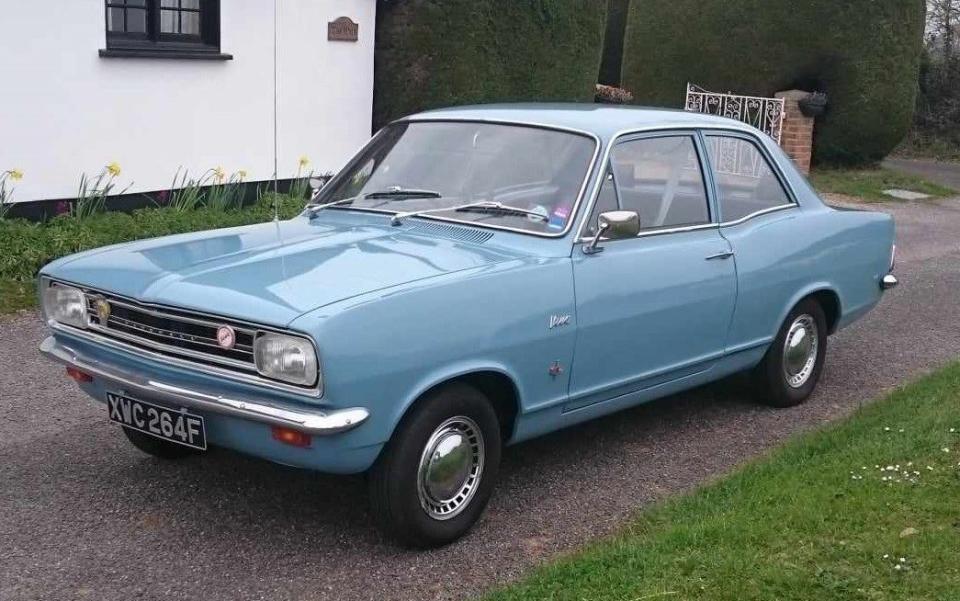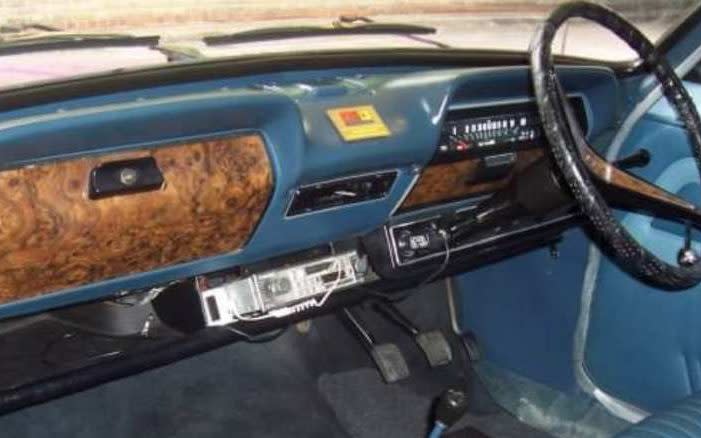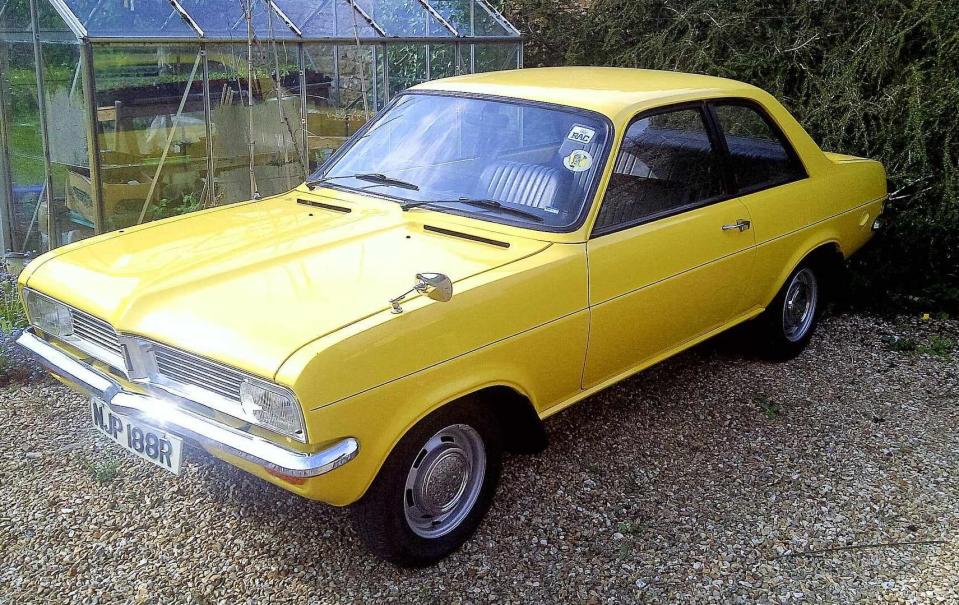UK’s rarest cars: Vauxhall Viva at 60 – the respectable family saloon

On 1 June 1964, a Viva HA was the first car to leave Vauxhall’s new factory at Ellesmere Port on Merseyside. When production of the Viva ended nearly 16 years later with the final HC model, via the HB, the name had come to define a sub-genre of British motoring: respectable and mechanically conventional but often with a quasi-American flair. Vauxhall built 1,516,792 examples of all three types and the rare survivors now convey a sense of bygone semi-detached respectability.
Vauxhall launched the Viva HA, its first post-war small car, on 26 September 1963. It was promoted as “the 1-litre car with the millionaire ride”, while the splendidly jovial PR film proclaimed, “The acceleration is terrific!”. A large boot, rack and pinion steering, and an all-synchromesh gearbox were other major sales features. One brochure posed the vital question: “Did Woman have the first as well as the last word about the design of this spacious, vivacious Vauxhall?”
The Telegraph believed the HA presented “a strong challenge to existing small cars on the basis of performance, space and ease of driving and maintenance” even if The Motor found it “commanded respect rather than great enthusiasm for its virtues from our testers”. The standard model cost £527 7s 1d, but most buyers opted for the £566 1s 3d De Luxe with its heater, passenger sun visor and “Screenclean” washers.
HA saloon production ended in 1966 after 309,538 units. Severe corrosion decimated their ranks despite their allegedly rust-repelling “Magic Mirror” acrylic paintwork. Marc Winchester-Horscraft’s uncle ordered a De Luxe in 1964, which has remained in the same family for nearly 60 years. “He eventually sold the number plate and gave me the car,” he said. “The HA has its quirks, such as when attempting to engage reverse, the whole gearstick ends up in your hand if pulled up too far.”
The replacement HB debuted on 21 September 1966, accompanied by a splendidly over-the-top commercial that urged cinemagoers to enjoy the latest “Jet smooth, whisper quiet” Viva. The “new day in 1-litre motoring” featured improved suspension and a more powerful 1,159cc engine. Best of all, the waisted “Coke bottle” styling made the rival Ford Anglia 105E look as contemporary as a Teddy Boy in London’s Swinging Sixties.

This paper thought that if there were a London Motor Show prize for the most improved new model, “the Viva would probably win it”. The SL flagship was £671 12s 4d and such luxuries as Ambla upholstery allowed the owner to regard the cheaper De Luxe and Standard in the manner of the famed John Cleese/Ronnie Barker/Ronnie Corbett “Class Sketch”. Terry Charles also finds the strip speedometer in his 1968 example “just gives the dashboard that extra bit of class”.
Charles came by his Viva in 2009 and recalls: “The original owner passed away some 25 years ago. His daughter took it on but discovered she couldn’t get used to driving an old car. So she put the Viva in the garage, where it remained for 10-plus years. I contacted her and the deal was done over the phone before I had set eyes on the car.” Today, his HB goes by the nom-de-Vauxhall of Jesamine, after the recording by The Casuals.

On 1 October 1970, the HC replaced the HB after 572,003 units. The four-door De Luxe cost £850 18s 1d, with “Plumaflex front seating” and rear ashtrays demonstrating “what the good life is all about”. The brochure further promised “Room at the top” – the copywriter was clearly a fan of Laurence Harvey’s films. Lenny Spence owns one of the first examples; he rescued his Flamenco Red De Luxe “from a garage in Birkenhead”.
The HC’s mid-Atlantic lines reflected Vauxhall’s vital Canadian export territory, but sales ended there in 1972 following complaints about unreliability. Some British motorists thought the Viva fell between the Escort and Cortina market sectors, while a notoriously awful television commercial did not enhance its image. However, the Vauxhall Chevette of 1975 did not directly succeed the HC and the Viva was still the UK’s eighth best-selling car in 1976.

The Viva E made its bow in October 1975 with a £1,577.16 price to attract parsimonious fleet managers. The publicity cited an “Interior rear view mirror” as a sales feature and a prominent “E” sticker on the boot lid reminded other road users of the pared-back, entry-level Viva’s status. Mark Rowlands says of his 1976 model: “It may be the only one left. I bought it from Derek Mathewson of [TV show] Bangers and Cash. It is all original and has covered less than 40,000 miles. My Viva also has carpets, because they were cheaper than rubber mats.”
By contrast with the E, the 1976 1300 GLS – “the most handsome, the most breathtaking Viva yet” – featured quad headlights, Ro-Style wheels and “Velour cloth trim”. The price was £2,682 and Motor found it “easily the best Viva yet”. John Irwin discovered his 1978 GLS on the Isle of Wight “probably over 20 years ago on eBay for £900. I had it transported to Ireland. No salt is used on roads over there and my Viva has original panels”.
In 1976, Vauxhall said it had no plans to discontinue the Viva, but in July 1979 the last of 640,863 HCs departed the factory. General Motors revived the name in 2015 for the UK-market Chevrolet Spark hatchback, but it could never capture the original Vivas’ appeal. If the HA hails from a world of crimplene and the HB embodies late 1960s Americana on an East Cheam scale, the HC is from when orange and brown were the colours du jour.
And as Rowlands finds: “It takes me ages if I pop out for a pint of milk in it as there is always a queue of people when I get back to the car. And their opening sentence always starts with ‘I remember...’”
Thanks to: https://www.vauxhallviva.com/, Terry Charles, John Irwin, Mark Rowlands, Lenny Spence and Marc Winchester-Horscraft.

